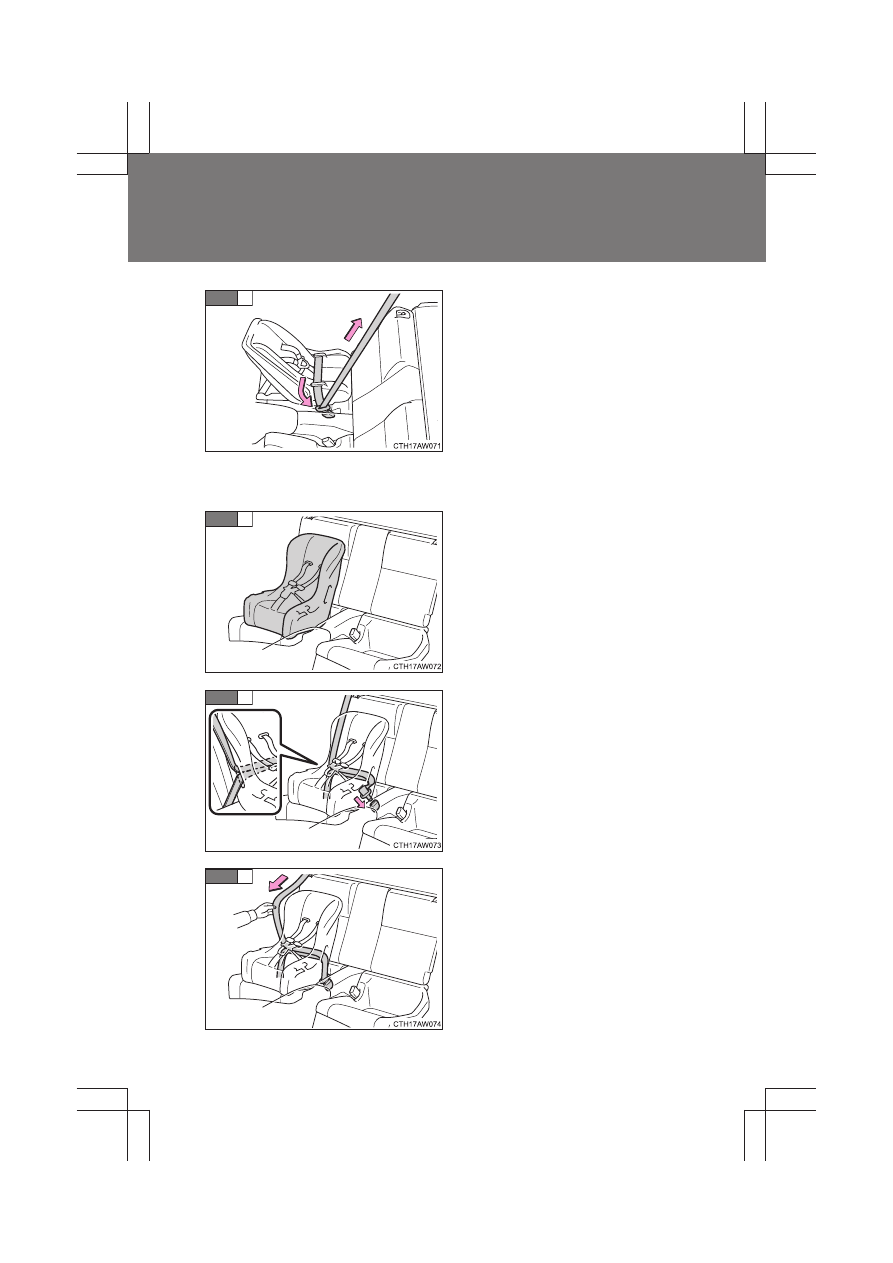Subaru BRZ (2019 year). Manual - part 10

150
1-7. Safety information
BRZ_U
While pushing the child restraint
system down into the rear seat,
allow the shoulder belt to retract
until the child restraint system is
securely in place.
After the shoulder belt has
retracted to a point where there is
no slack in the belt, pull the belt to
check that it cannot be extended.
■
Forward facing
Convertible seat
Place the child restraint system
on the seat facing the front of the
vehicle.
Run the seatbelt through the
child restraint system and insert
the plate into the buckle. Make
sure that the belt is not twisted.
Fully extend the shoulder belt
and allow it to retract to put it in
lock mode. In lock mode, the belt
cannot be extended.
STEP
4
STEP
1
STEP
2
STEP
3